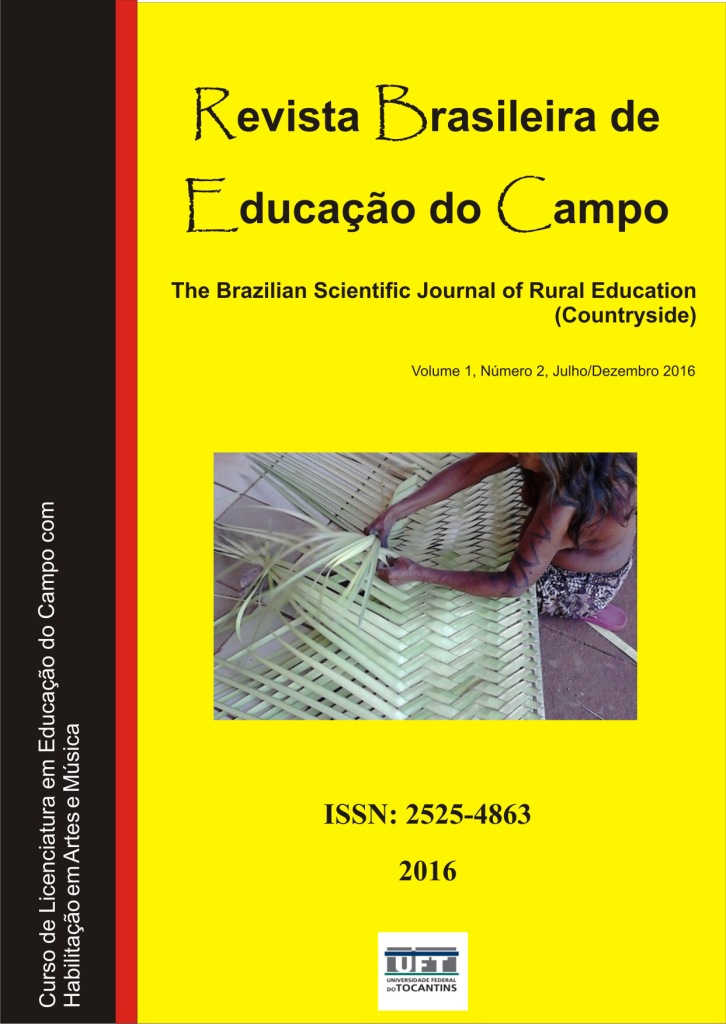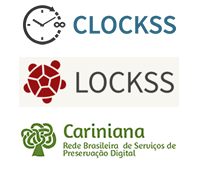Educación de primera infancia del campo: un estudio en el municipio de Chopinzinho/PR
DOI:
https://doi.org/10.20873/uft.2525-4863.2016v1n2p453Palabras clave:
Educação Infantil, Campo, LegislaçãoResumen
ABSTRACT. The theme of this article dealt with the Early Childhood Education in Rural Area. The objectives were: to assess the implementation of legislation that guides the Childhood Education in Rural Area and discuss the care of children in the Municipal Rural School Mario Bettega, confronting the legislation with its application. This was a bibliographic and documentary research about the legislation that guides the Early Childhood Education, watching it in the school routine. Initially was presented a historical overview of the Brazilian Early Childhood Education, of the childhood conceptions and of the Education in Rural Area, reflecting, this way, on the data obtained in this research. It was detected that there are contradictions between the progress of the legislation - to ensure the right to Childhood Education in Rural Area - and its implementation in the school, that was assisted, because the Department of Education and Culture of Chopinzinho does not work with any document for the Early Childhood Education in Rural Areas and it does not offer a specific training for the professionals in this area. The school, that was assisted, disregards the education and the school in rural area concept, either in its internal documents (such as 2007 PPP), or on the teaching organization. These contradictions express the limits of the bourgeois State, which incorporates the demands of the society in formal terms and do not abide them in the real plane.
Descargas
Citas
Barbosa, M. C. S., & Fernandes. S. B. (2013). Educação infantil e educação do campo: um encontro necessário para concretizar a justiça social com as crianças pequenas residentes em áreas rurais. Revista Reflexão e Ação, 21, 299-315.
Brasil. (1990). Lei nº 8.069, de 13 de julho de 1990. Estabelece o Estatuto da Criança e do Adolescente e dá outras providências. Brasília: Diário Oficial da União. Recuperado em 15 junho, 2016, de http://www.febem.sp.gov.br/files/pdf/eca.pdf
Brasil. (1996). Lei nº. 9.394, de 20 de dezembro de 1996. Estabelece a Lei de Diretrizes e Bases da Educação Nacional. Recuperado em 15 junho, 2016, de http://portal.mec.gov.br/arqui vos/pdf/ldb.pdf
Brasil. (1998). Constituição da República Federativa do Brasil de 1988. Recuperado em 15 junho, 2016, de http://www.senado.gov.br/legislacao/const/con1988/CON1988_16.04.2015/CON1988.pdf
Brasil. (2009a). Emenda Constitucional n° 59, de 11 de novembro de 2009. Acrescenta § 3º ao art. 76 da Constituição da República Federativa do Brasil.
Brasil. (2009b, dezembro). Resolução nº 5-MEC/SEB. Estabelece as Diretrizes Curriculares Nacionais para Educação Infantil. Brasília. DF: MEC/SEB.
Brasil. (2002, abril). Resolução nº 1. Estabelece as Diretrizes Operacionais para a Educação Básica nas Escolas do Campo. In Secadi - Secretaria de Educação Continuada, Alfabetização, Diversidade e Inclusão. Educação do Campo: Marcos Normativos.
Brasil. (2008, abril). Resolução nº 2. Estabelece as Diretrizes Operacionais para a Educação Básica nas Escolas do Campo. In Secadi - Secretaria de Educação Continuada, Alfabetização, Diversidade e Inclusão. Educação do Campo: Marcos Normativos.
Brasil. (2014, junho). Lei nº 13.005. Estabelece o Plano Nacional de Educação: decênio 2014-2024.
Caldart, R. S. (2012). Educação do campo. In: Caldart. R. S. (Org). Dicionário da Educação do Campo. Rio de Janeiro; São Paulo: Expressão Popular.
Caldart, R. S. (2009). Educação do campo: notas para uma análise de percurso. Rio de Janeiro: Trabalho Educação e Saúde.
Chopinzinho. (2015, junho). Lei nº 3.434, de 22 de junho de 2015. Estabelece o Plano Municipal de Educação do Município de Chopinzinho: decênio 2015 – 2025.
Chopinzinho. (2007). Projeto Político-Pedagógico da Escola Rural Municipal Mário Bettega.
Knopf. J. F. (2013). A relação entre o MST - PR e o governo Roberto Requião: análise da política da escola itinerante (2003 – 2010) (Dissertação de Mestrado). Universidade Estadual do Oeste do Paraná.
Kosik. K. (2002). Dialética do concreto. São Paulo: Paz e Terra.
Kuhlmann, M. Jr. (2001). Infância e educação infantil: uma abordagem histórica. Porto Alegre: Mediação.
Lüdke, M., & André, M. E. D. (1986). A. Abordagens qualitativas de pesquisa: a pesquisa etnográfica e o estudo de caso. In Pesquisa em educação: abordagens qualitativas. São Paulo: EPU.
Marcilio, M. L. (2001). A roda dos expostos e a criança abandonada na história do Brasil: 1726-1950. In Freitas, M. C. (Org.). História social da infância no Brasil. São Paulo: Cortez.
Paraná. (2006). Diretrizes Curriculares da Rede Pública de Educação Básica do Estado do Paraná. Curitiba: Secretaria do Estado de Educação – SEED/PR.
Paraná. (2010). Instrução Conjunta n° 001/2010. Curitiba: SEED/SUED-PR.
Peroni, V. M. V. (2003). Política educacional e papel do Estado: no Brasil dos anos 1990. São Paulo: Xanã.
Santana, D. R. (2011). Infância e educação infantil no Brasil: percursos e percalços. Itapetinga: Universidade Estadual do Sudoeste da Bahia - UESB.
Silva, A. P. S., Felipe, E. S., & Ramos, M. M. (2012). Infância do campo. In Caldart, R. S. (Org.). Dicionário da Educação do Campo. Rio de Janeiro; São Paulo: Expressão Popular.
Silva, A P. S., & Pasuch, J. (2010). Orientações curriculares para a educação infantil do campo. Belo Horizonte. Recuperado em 15 junho, 2016, em http://portal.mec.gov.br/index.php? option=com _content&view=article&id=16219&Itemid=817#docs
Silva, J. B. (2012). Crianças assentadas e educação infantil no/do campo: contextos e significações (Dissertação de Mestrado). Universidade de São Paulo.
Publicado
Cómo citar
Número
Sección
Licencia
Proposal for Copyright Notice Creative Commons
1. Policy Proposal to Open Access Journals
Authors who publish with this journal agree to the following terms:
A. Authors retain copyright and grant the journal right of first publication with the work simultaneously licensed under the Creative Commons Attribution License that allows sharing the work with recognition of its initial publication in this journal.
B. Authors are able to take on additional contracts separately, non-exclusive distribution of the version of the paper published in this journal (ex .: publish in institutional repository or as a book), with an acknowledgment of its initial publication in this journal.
C. Authors are permitted and encouraged to post their work online (eg .: in institutional repositories or on their website) at any point before or during the editorial process, as it can lead to productive exchanges, as well as increase the impact and the citation of published work (See the Effect of Open Access).














